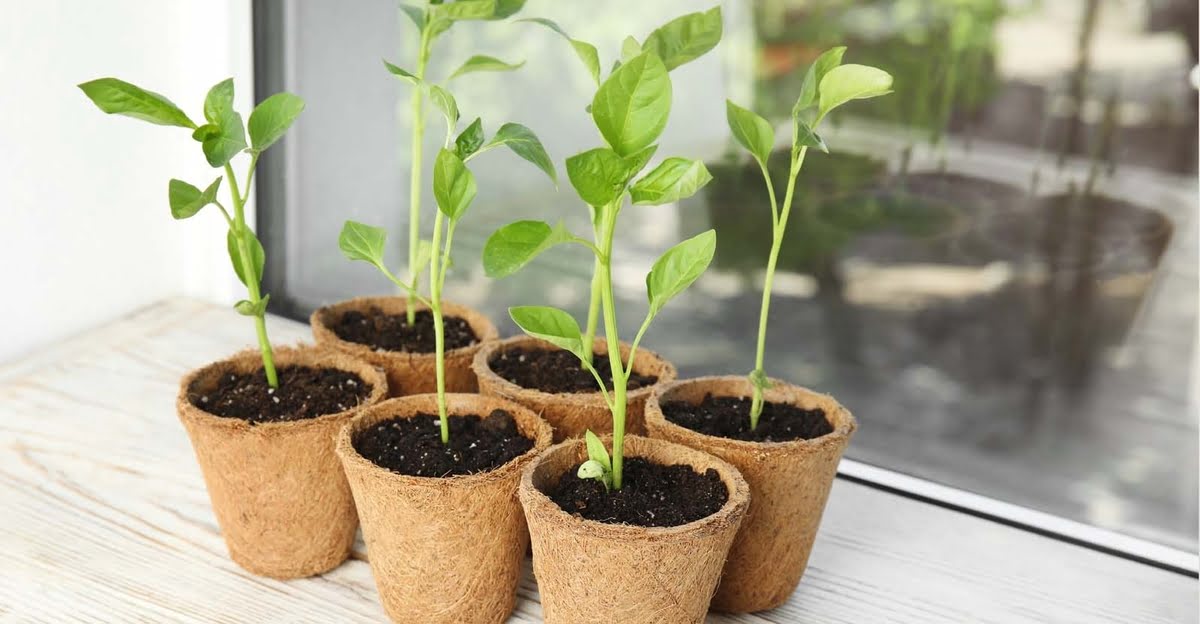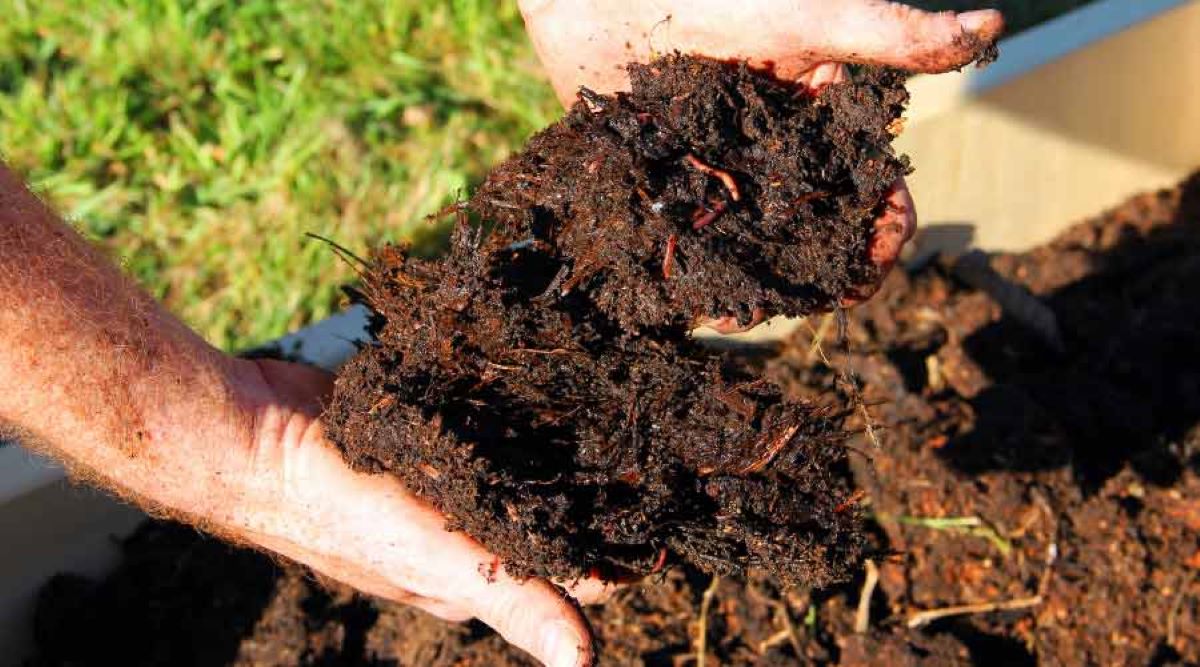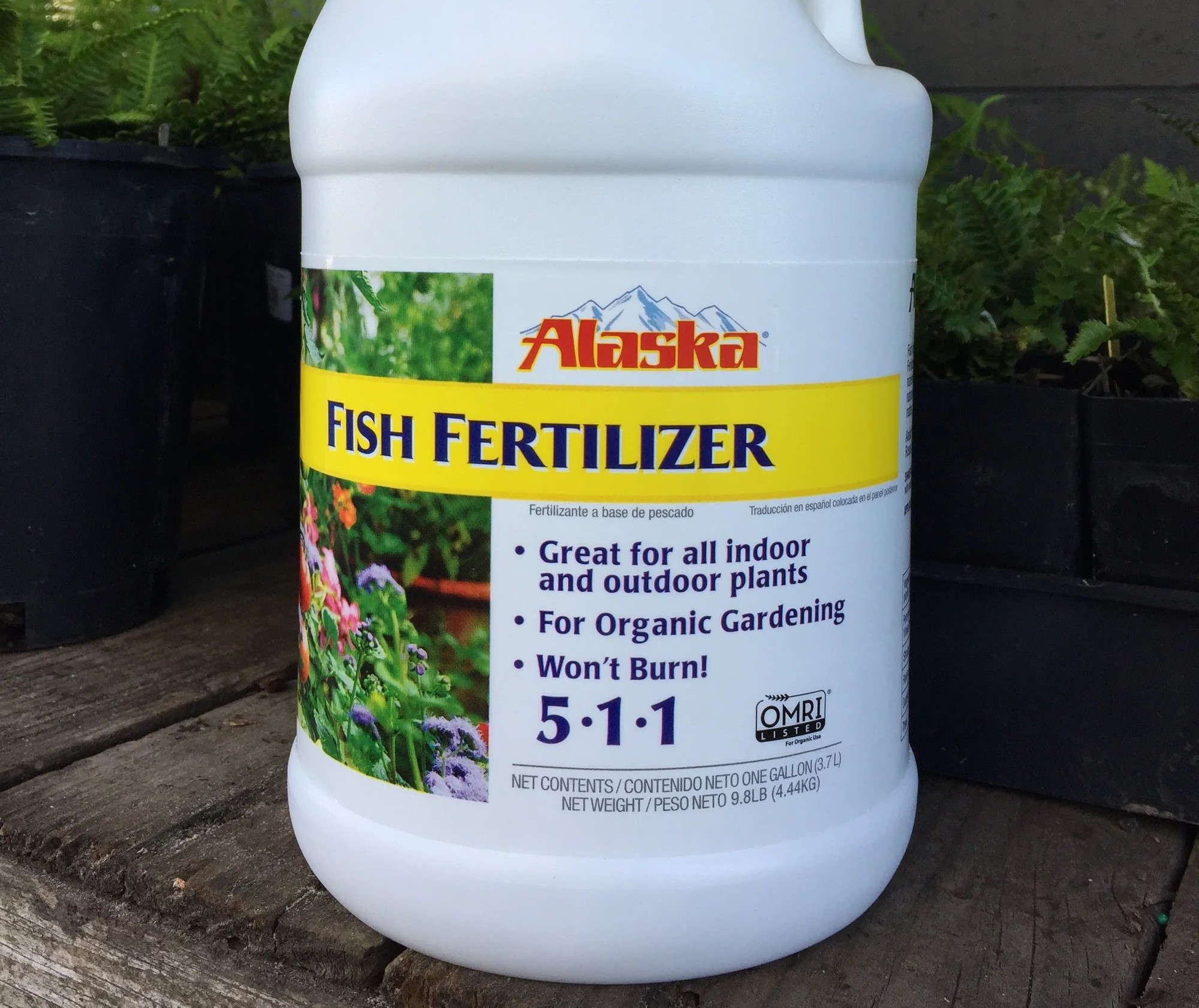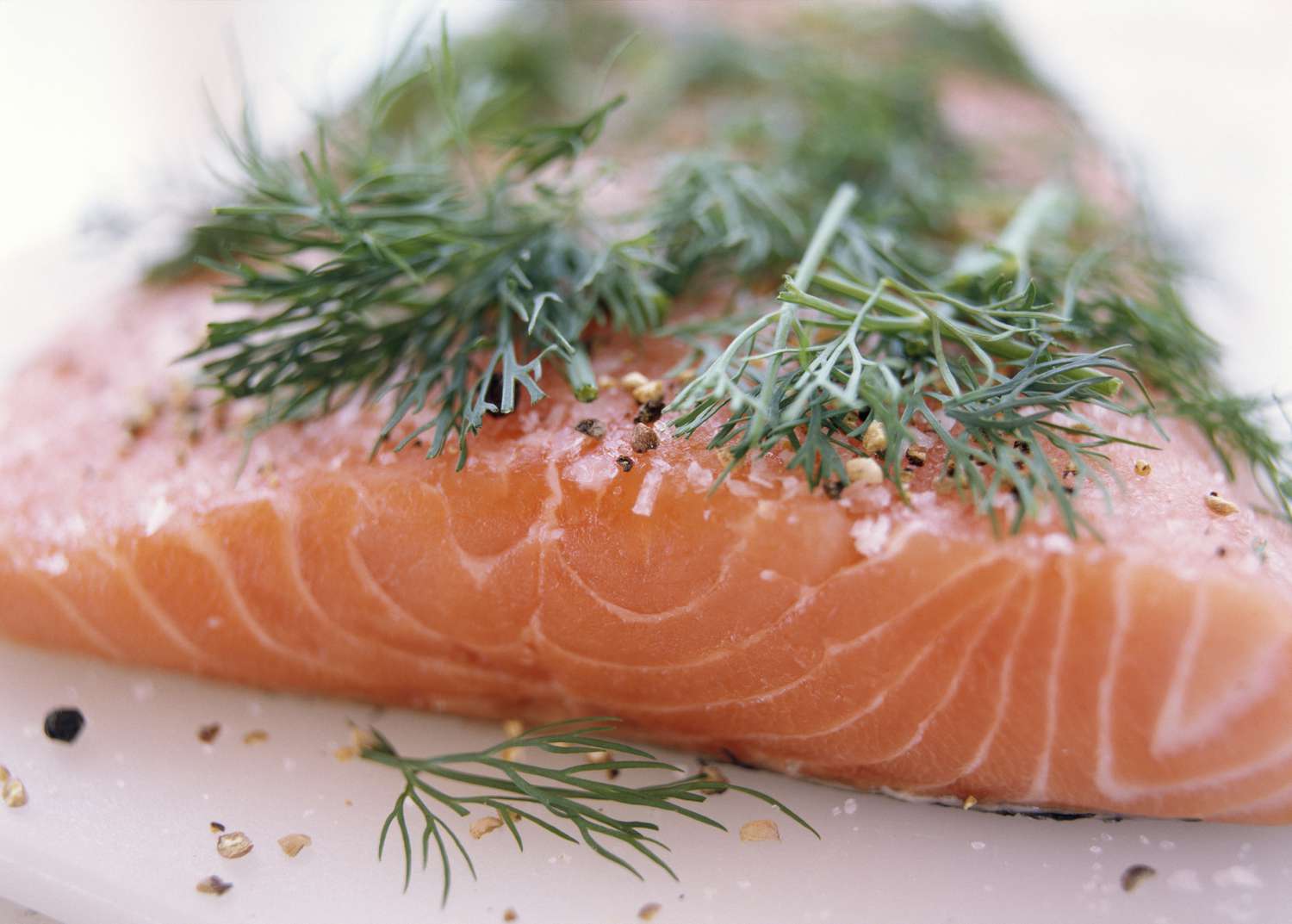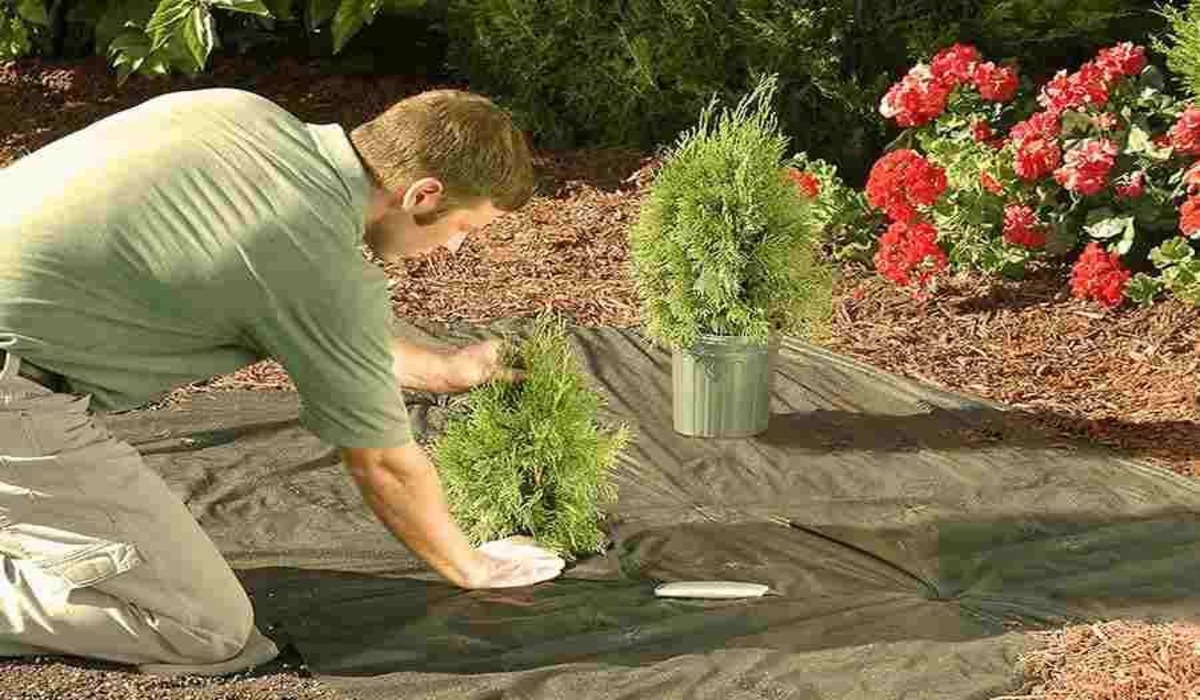Home>Types of Gardening>Edible Gardening>How Much Fish Emulsion For Seedlings
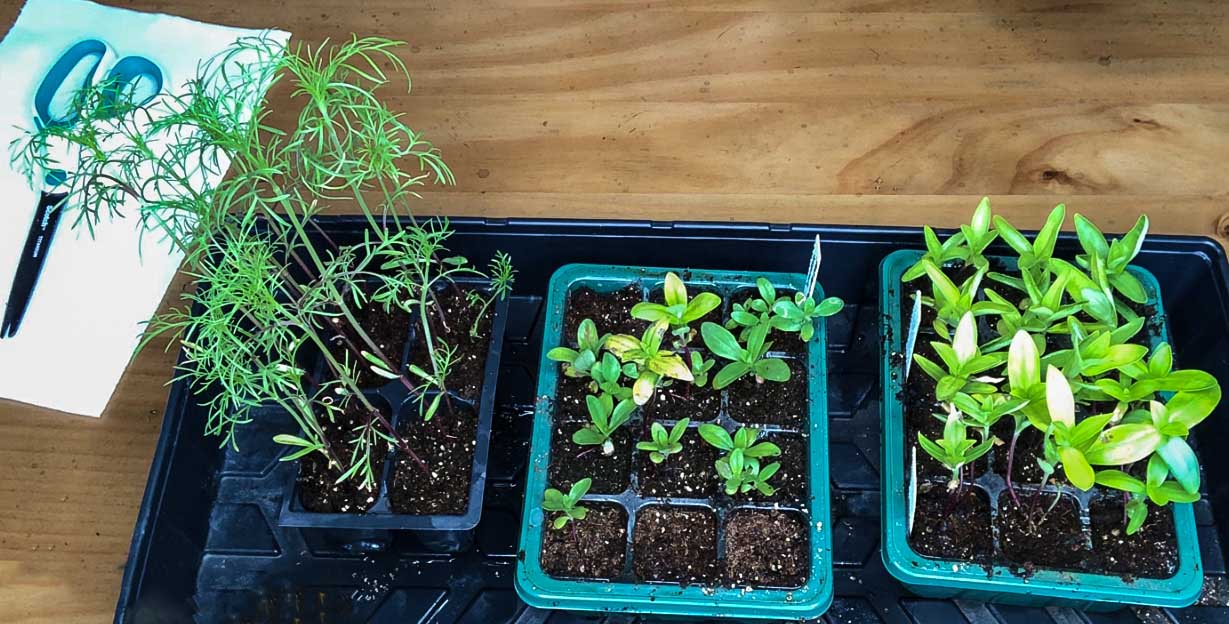

Edible Gardening
How Much Fish Emulsion For Seedlings
Modified: January 22, 2024
Discover the optimal amount of fish emulsion for seedlings in your edible gardening journey. Maximize growth and nourishment with expert tips and advice.
(Many of the links in this article redirect to a specific reviewed product. Your purchase of these products through affiliate links helps to generate commission for Chicagolandgardening.com, at no extra cost. Learn more)
Table of Contents
Introduction
Gardening enthusiasts understand the joy and satisfaction of growing their own food. One popular method is edible gardening, which involves growing fruits, vegetables, and herbs in your own backyard. Not only does edible gardening provide you with fresh, organic produce, but it also allows you to connect with nature and promote sustainability.
When it comes to nurturing seedlings and helping them thrive, there are various techniques and products available. One such product is fish emulsion, a nutrient-rich fertilizer derived from fish. Fish emulsion has been used for centuries in gardening and is prized for its effectiveness and eco-friendly nature. In this article, we will explore the benefits of using fish emulsion for seedlings, how to properly use it, and important factors to consider.
Fish emulsion is derived from the byproducts of fish processing, such as fish meal or fish scraps. It is processed into a liquid form that is easy to apply to plants. The high nutrient content of fish emulsion makes it an excellent organic fertilizer for seedlings, providing them with essential macronutrients like nitrogen, phosphorus, and potassium, as well as trace elements like calcium, magnesium, and iron.
One of the primary benefits of using fish emulsion for seedlings is its ability to promote healthy root development. The nutrients in fish emulsion are readily absorbed by the plants, stimulating strong and robust root growth. This, in turn, leads to healthier seedlings that are better equipped to withstand environmental stress and produce abundant yields.
Another advantage of fish emulsion is its organic nature. It is free from synthetic chemicals and harmful toxins, making it safe to use around children, pets, and beneficial insects. By opting for organic fertilizers like fish emulsion, you contribute to the overall health of your garden ecosystem and reduce the environmental impact often associated with conventional gardening methods.
Furthermore, fish emulsion serves as a natural soil conditioner, improving soil structure and enhancing its ability to retain moisture. This can be particularly beneficial for seedlings, as they are more susceptible to drought stress. By maintaining adequate soil moisture levels, you create a favorable environment for seedling growth, preventing wilting and promoting healthy development.
In the next sections, we will delve deeper into the factors to consider when using fish emulsion for seedlings, the recommended dosage, as well as some precautions and tips to ensure optimal results. Let’s explore how to harness the power of fish emulsion to foster strong and thriving seedlings in your edible garden.
What is Fish Emulsion?
Fish emulsion is a natural, organic fertilizer that is derived from fish byproducts. It is created through a process that involves breaking down fish materials, such as fish meal or fish scraps, into a liquid form that is easy to apply to plants. This liquid contains a wide range of nutrients that are beneficial for plant growth and development.
The main components of fish emulsion include nitrogen, phosphorus, and potassium, which are known as the three primary nutrients required by plants. Nitrogen promotes leaf and stem growth, phosphorus enhances root development and flower production, and potassium aids in overall plant health and resilience.
In addition to these primary nutrients, fish emulsion also contains various trace elements, such as calcium, magnesium, and iron. These micronutrients are essential for the healthy growth of plants, supporting processes like photosynthesis and nutrient uptake.
Fish emulsion is widely appreciated by gardeners for its numerous benefits. Firstly, it is an organic fertilizer, meaning that it is free from synthetic chemicals and additives. This makes it a safe option for both the environment and the plants themselves. By using fish emulsion, you can avoid introducing harmful substances into your garden and promote a more sustainable approach to gardening.
Another advantage of fish emulsion is its bioavailability. The nutrients in fish emulsion are easily absorbed by plant roots, making them readily available for the plants to uptake. This fast-acting nature of fish emulsion ensures that your seedlings receive the nutrients they need for healthy growth in a timely manner.
Fish emulsion also contributes to the overall health of the soil. It acts as a natural soil conditioner, improving soil structure and increasing its ability to hold moisture. This is particularly beneficial for seedlings, as they require a well-draining yet moisture-retentive environment to thrive. By incorporating fish emulsion into your soil, you can create an optimal growing environment for your seedlings.
While fish emulsion offers numerous benefits for plants, it is important to note that it does have a distinct odor. The smell can be strong and fishy, which may not be pleasant for some gardeners. However, the odor typically dissipates quickly, especially after watering or rain. If the smell is a concern for you, consider applying the fish emulsion in the evening or when the weather is cooler to minimize the impact.
In summary, fish emulsion is a natural and organic fertilizer derived from fish byproducts. It provides plants with essential nutrients for growth and development, improving their overall health and resilience. By incorporating fish emulsion into your gardening routine, you can support the success of your seedlings and promote a more sustainable approach to gardening.
Benefits of Fish Emulsion for Seedlings
Fish emulsion offers a variety of benefits when used as a fertilizer for seedlings. Let’s explore some of the key advantages:
- Promotes Healthy Root Development: Fish emulsion is rich in nutrients that are vital for root growth, such as nitrogen, phosphorus, and potassium. By providing these essential nutrients, fish emulsion stimulates strong and healthy root development in seedlings. This enables them to establish a solid foundation, absorb nutrients more efficiently, and withstand environmental stressors.
- Enhances Nutrient Uptake: The nutrients in fish emulsion are easily absorbed by plant roots, ensuring that seedlings have access to the vital elements they need for growth. This improves the overall nutrient uptake efficiency of seedlings and supports their healthy development.
- Improves Plant Vigor: Fish emulsion not only supplies essential nutrients but also provides organic matter to the soil. This helps improve the soil structure, allowing the roots to penetrate easily and access water and nutrients. As a result, seedlings grown with fish emulsion exhibit increased vigor, with larger, greener leaves and stronger stems.
- Boosts Resistance to Diseases and Pests: Seedlings that receive proper nutrition from fish emulsion are better equipped to fend off diseases and pests. The balanced nutrient profile strengthens the plant’s immune system, making it more resistant to common issues that can hinder seedling growth.
- Promotes Abundant Flowering and Fruit Production: The high phosphorus content in fish emulsion promotes flower formation in seedlings, leading to increased fruit and vegetable yields. By incorporating fish emulsion into your seedlings’ feeding regimen, you can maximize their productivity and enjoy a bountiful harvest.
- Environmentally Friendly: Fish emulsion is an eco-friendly fertilizer option. It is derived from sustainable sources such as fish byproducts and does not contribute to synthetic chemical runoff. By choosing fish emulsion for your seedlings, you contribute to a more sustainable and environmentally conscious gardening practice.
These are just a few of the incredible benefits that fish emulsion offers for seedlings. By incorporating this natural fertilizer into your gardening routine, you can ensure the healthy development and success of your seedlings, setting them up for a thriving future in your garden.
Factors to Consider
When using fish emulsion for seedlings, there are several important factors to consider to ensure optimal results. Let’s explore these factors:
- Seedling Stage: The stage of your seedlings will determine how and when to use fish emulsion. Young seedlings that have just sprouted may have more sensitive roots and require a diluted solution of fish emulsion. As the seedlings mature and develop stronger root systems, you can gradually increase the concentration or frequency of application.
- Soil Composition: Understanding your soil composition is key to using fish emulsion effectively. Conduct a soil test to determine the pH level and nutrient deficiencies. Some plants prefer slightly acidic soil, while others thrive in alkaline conditions. Adjusting the pH levels can maximize nutrient availability and ensure the plants can absorb the nutrients from the fish emulsion more effectively.
- Plant Nutrient Requirements: Different plants have varying nutrient requirements. Consider the specific needs of your seedlings when determining the frequency and application rate of fish emulsion. Leafy greens, for example, typically benefit from higher nitrogen levels, while fruiting plants may require more phosphorus and potassium for optimal flower and fruit development.
- Temperature and Weather Conditions: It’s important to consider the temperature and weather conditions when applying fish emulsion to your seedlings. Applying fish emulsion during the cooler parts of the day or in the evening can help minimize the risk of nutrient burn due to high temperatures. Additionally, heavy rainfall can dilute the fish emulsion, so it may be necessary to reapply after heavy or prolonged rain events.
- Complementary Soil Amendments: Along with fish emulsion, incorporating other soil amendments can further enhance the nutrient availability for seedlings. Adding organic matter like compost or well-rotted manure can improve soil structure, increase moisture retention, and provide additional nutrients. Consider combining fish emulsion with other organic amendments to create a balanced and nutrient-rich growing medium.
- Utilizing Fish Emulsion as a Foliar Spray: In addition to applying fish emulsion to the soil, it can also be used as a foliar spray. Spraying diluted fish emulsion directly on the leaves of seedlings can provide quick nutrient uptake and help correct nutrient deficiencies. This method is especially useful for seedlings that may have nutrient deficiencies or are struggling to uptake nutrients from the soil.
By considering these factors, you can ensure that you are using fish emulsion in the most effective and efficient way for your seedlings. Taking the time to understand your seedlings’ needs, soil conditions, and utilizing proper application techniques will lead to healthy, robust plants that thrive in your garden.
How to Use Fish Emulsion for Seedlings
Using fish emulsion correctly is crucial to provide the necessary nutrients for your seedlings’ growth. Here are some guidelines on how to use fish emulsion effectively:
- Dilute the Fish Emulsion: For young seedlings, it is recommended to dilute the fish emulsion with water to prevent any potential root burn. Follow the instructions on the fish emulsion product label for the appropriate dilution ratio, typically around 1 part fish emulsion to 4 parts water.
- Apply to the Soil: Water the seedlings thoroughly before applying fish emulsion to ensure proper absorption. Pour the diluted fish emulsion around the base of the plants, being careful not to splash it on the leaves. This way, the nutrients can be easily absorbed by the roots and distributed throughout the plant.
- Apply When Soil is Moist: It is best to apply fish emulsion when the soil is already moist. This helps the nutrients in the fish emulsion to work more effectively and prevent any potential stress on the seedlings. If needed, water the soil lightly before applying the diluted fish emulsion.
- Repeat Application Regularly: To ensure a continuous supply of nutrients, it is recommended to apply fish emulsion every two to four weeks during the growing season. However, it’s important to closely monitor your seedlings and adjust the frequency and concentration based on their specific needs.
- Consider Foliar Application: As an additional feeding method, you can also use fish emulsion as a foliar spray. Dilute the fish emulsion as per the instructions and spray it on the leaves of the seedlings. This method allows for quick nutrient absorption through the leaves, providing an extra boost of nutrition.
- Follow Proper Storage and Handling: Store your fish emulsion in a cool, dark place to prevent bacterial growth and maintain its effectiveness. Shake the container before each use to ensure proper distribution of nutrients. Always follow the storage and handling instructions provided by the manufacturer.
Remember to closely observe your seedlings after applying fish emulsion. Monitor their growth and response to the fertilizer, making any necessary adjustments to the application rate or frequency. By following these guidelines, you can effectively use fish emulsion to provide the essential nutrients your seedlings need for healthy and robust growth.
Recommended Dosage
The recommended dosage of fish emulsion for seedlings will depend on the specific product and the stage of your seedlings’ growth. Here are some general guidelines:
- Dilution Ratio: For young seedlings, it is best to dilute the fish emulsion with water to prevent any potential nutrient burn. The typical dilution ratio is around 1 part fish emulsion to 4 parts water. However, always refer to the instructions on the product label for specific dilution recommendations.
- Concentration: As seedlings mature and their root systems become more established, you can gradually increase the concentration of fish emulsion. This can be done by reducing the amount of water used for dilution or by applying it undiluted in small quantities directly to the soil.
- Frequency: It is generally recommended to apply fish emulsion to seedlings every two to four weeks during the growing season. However, closely monitor the seedlings’ response to the fertilizer and adjust the frequency based on their specific needs. If you notice signs of over-fertilization, such as leaf burn or stunted growth, reduce the frequency of application.
- Seedling Size: Consider the size and age of your seedlings when determining the dosage. Smaller, younger seedlings will require a smaller amount of diluted fish emulsion compared to larger and more mature seedlings. Take their stage of growth into account and adjust the dosage accordingly.
- Specific Plant Requirements: Different types of seedlings may have varying nutrient requirements. Research the specific needs of the plants you are growing to ensure you are providing them with the appropriate amount of nutrients through fish emulsion. Leafy greens, for example, may benefit from more frequent applications, while slower-growing plants may require less frequent but stronger doses.
It is important to note that while fish emulsion is safe and organic, it is still possible to over-fertilize seedlings. Too much fertilizer can cause nutrient imbalances or burn the roots, leading to stunted growth. Always start with a lower concentration and gradually increase it if needed. Observe the seedlings closely and adjust the dosage based on their response.
Remember to follow the instructions provided on the specific fish emulsion product you are using and pay attention to any dosage recommendations given by the manufacturer. By using fish emulsion in the proper dosage, you can support the healthy growth and development of your seedlings without causing any harm.
Precautions and Tips
When using fish emulsion for seedlings, there are a few precautions and tips to keep in mind to ensure the best results:
- Follow the Instructions: Always read and follow the instructions provided on the fish emulsion product label. Different brands and products may have specific guidelines for application rates, dilution ratios, and frequency.
- Do Not Overapply: Avoid overapplication of fish emulsion as it can lead to nutrient imbalances or burn the roots of your seedlings. More is not always better when it comes to fertilization.
- Apply When Soil is Moist: It is best to apply fish emulsion to the soil when it is already moist. This helps the nutrients to be absorbed more effectively by the seedlings’ roots.
- Avoid Foliar Application in Full Sunlight: If using fish emulsion as a foliar spray, do so in the early morning or late afternoon when the sun is not at its strongest. This reduces the risk of leaf burn and increases the effectiveness of nutrient absorption.
- Store Properly: Store your fish emulsion in a cool, dark place according to the manufacturer’s instructions. This helps maintain its effectiveness and prevents bacterial growth.
- Minimize Contact with Leaves: When applying fish emulsion to the soil, avoid splashing it onto the leaves of the seedlings. Excessive contact with the foliage can potentially promote the growth of fungal diseases.
- Consider Alternate Fertilizers: While fish emulsion is a beneficial and natural fertilizer, it may not be suitable for all plants or gardeners. Consider alternative fertilizers, such as compost or other organic options, to meet the specific needs of your seedlings.
- Observe Seedling Response: Monitor your seedlings closely after applying fish emulsion. Watch for any signs of over-fertilization, such as leaf burn or stunted growth. If these signs occur, reduce the dosage or frequency of fish emulsion application.
- Be Mindful of the Odor: Fish emulsion has a distinct odor that can be intense. Take this into consideration when applying it, especially if you have sensitivity to strong smells or if your garden is in close proximity to living areas.
Following these precautions and tips will help you use fish emulsion effectively and minimize any potential risks. Remember to adjust the dosage, frequency, and application methods based on the specific needs of your seedlings and the instructions provided by the manufacturer. By being mindful and attentive, you can provide your seedlings with the necessary nutrients for healthy growth and development.
Conclusion
Fish emulsion is a valuable tool for nurturing and supporting the growth of seedlings in your garden. With its rich nutrient content, eco-friendly nature, and versatility, fish emulsion offers numerous benefits to seedlings and gardeners alike.
By promoting healthy root development, enhancing nutrient uptake, and improving overall plant vigor, fish emulsion helps seedlings establish a strong foundation for successful growth. The organic nature of fish emulsion also ensures a safe and sustainable approach to gardening, minimizing harm to the environment, children, pets, and beneficial insects.
When using fish emulsion for seedlings, it is essential to consider factors such as seedling stage, soil composition, and specific plant requirements. Diluting the fish emulsion, applying it when the soil is moist, and following recommended dosage and frequency guidelines are key to achieving optimal results. Additionally, storing fish emulsion properly and being mindful of its distinct odor are important precautions to keep in mind.
Ultimately, by using fish emulsion in a responsible and informed manner, you can provide your seedlings with the essential nutrients they need to thrive. Whether you are growing leafy greens, herbs, or fruiting plants, incorporating fish emulsion into your gardening routine can significantly impact the growth, health, and productivity of your seedlings.
So, why not harness the power of fish emulsion in your edible garden? Embrace the benefits it offers, experiment with different application methods, and witness the transformation of your seedlings into thriving plants. By nourishing your seedlings with fish emulsion, you can embark on a rewarding journey of cultivating your own fresh and organic food, while connecting with nature and promoting sustainable gardening practices.

